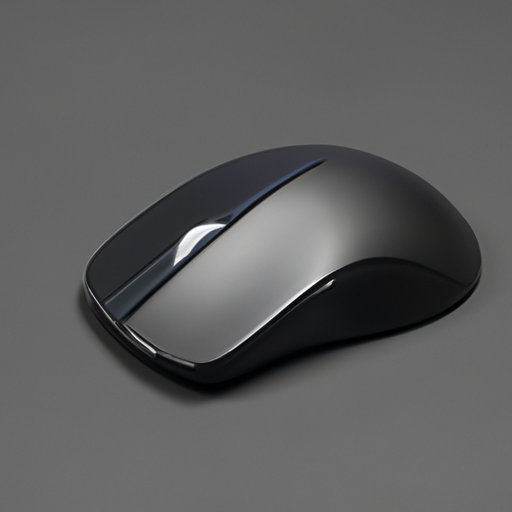Introduction
Whether you’re a gamer seeking to improve your accuracy or a creative professional who needs finer control of your mouse, understanding DPI – or dots per inch – is crucial to achieving your goals. Here, we’ll explain what DPI is, how it works, and why it matters for your mouse’s performance. This post is intended for beginners who want to learn more about DPI and how to use it to improve their mouse’s precision and responsiveness.
The Beginner’s Guide to DPI: What is it and How it Works on a Mouse
DPI is a measure of how many pixels your mouse cursor moves on the screen for every inch you move your mouse. In other words, it represents the sensitivity of your mouse. A higher DPI means that your cursor will move more quickly across the screen, while a lower DPI will result in a slower cursor speed.
Most modern mice have adjustable DPI settings, which are usually accessed via software that comes with the mouse. This means that you can change the sensitivity of your mouse based on your needs, whether you’re editing images, playing games, or just browsing the web. Adjusting the DPI can help you improve your response time and accuracy, as well as reduce the physical strain on your wrist because you can move the mouse less.
Maximizing Your Mouse’s Performance: Understanding DPI for Gaming and Productivity
One of the most significant differences in the requirements for DPI settings is between gaming and productivity tasks. Gamers tend to use much higher DPI settings for faster cursor speeds, while professionals in creative industries may prefer lower DPI settings for greater accuracy and control.
Gaming mice often include specific features for changing DPI settings on the fly, making it effortless to adjust sensitivity to specific situations, such as when sniping or running and gunning. These features can be programmed to match a gamer’s distinct needs. On the other hand, tasks that require fine motor control, such as video editing or graphic designing, often require lower DPI settings as smaller movements that translate to less mouse movement.
The Science Behind Mouse Sensitivity: Learning about DPI and its Effects on Cursor Movement
Mouse sensors use optical or laser technology to track the movement of the mouse across a surface. DPI is determined by the resolution of the sensor and the mouse’s firmware. High-resolution sensors track fine movements accurately, while sensors with lower resolutions can be less precise. The resolution of these sensors determines how accurately your mouse can track your movements.
The DPI setting on your mouse affects the speed of your cursor, with higher DPI settings resulting in faster cursor movement. It can also affect the precision of your mouse, with greater DPI settings also tending to be more precise.
DPI Demystified: Exploring the Relationship Between Mouse Resolution and Screen Display
The relationship between DPI and screen resolution is a crucial one to understand. If your screen has a high resolution, such as 4k, your cursor may seem to move slower across the screen because there are more pixels to display the same distance as on a lower resolution screen. High DPI settings will result in a faster cursor movement to compensate for this difference in display. In contrast, a lower-resolution screen will make the cursor appear to move faster, even at lower DPI settings.
Further, pixel density can also affect your mouse’s performance. As pixel density increases, there are more pixels per inch, which can make movements more precise. Higher DPI settings may be necessary to compensate for the greater precision offered by higher pixel density on screens.
Choosing the Right Mouse for You: How DPI Affects Your Mouse’s Precision and Responsiveness
When selecting a new mouse, it’s essential to consider how its DPI specifications will affect your needs. Higher DPI mice are often marketed as providing ‘better’ performance, but it’s essential to remember that the best DPI setting for you will depend on how you plan to use your mouse.
If you are a gamer, you may prefer a mouse with a range of adjustable DPI settings, which can help you maximize your performance in specific games or situations. If you work in a professional capacity, it may be more important to prioritize a mouse that provides accurate and precise movements at lower DPI levels.
Conclusion
DPI is a critical factor in your mouse’s performance and can affect its precision and responsiveness. Understanding how DPI works and how it interacts with your screen resolution and individual needs can go a long way toward boosting your productivity, accuracy, and comfort levels. Don’t hesitate to experiment with different DPI settings to find the ones that work best for your unique situation and goals.
Overall with this guide, you’ve learned the basics of DPI, Gaming vs Productivity DPI, the science behind mouse sensitivity, DPI and screen resolutions, and, ultimately, the best ways to choose the right mouse for you! Keep DPI in mind when purchasing your next mouse to ensure optimal precision and responsiveness for your needs.
